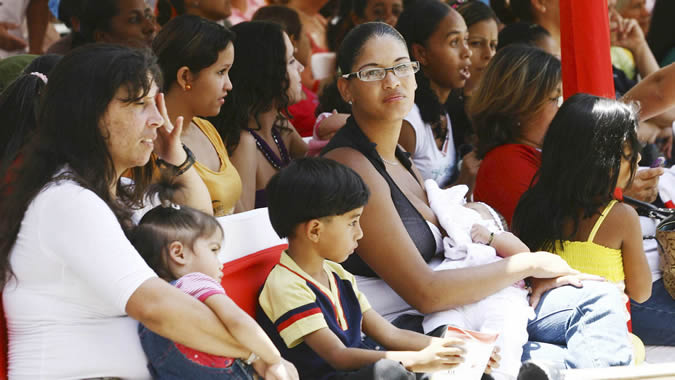ECLAC’s Database Offers Information on Maternity in Latin America and the Caribbean
Work area(s)
Topic(s)
The information was obtained by processing nearly 100 census microdata bases from the last four rounds of censuses in the region’s countries.

The Economic Commission for Latin America and the Caribbean (ECLAC) offers in its regional database on maternity, MATERNILAC, a comparative view of this topic in 27 countries and territories of Latin America and the Caribbean.
Based on the processing of almost 100 microdata bases from the last four rounds of censuses in the region’s countries (1980, 1990, 2000 and 2010), MATERNILAC presents absolute and relative values on maternity (with and without live births) by simple and grouped ages, from 10 to 50 years old, considering 50 and above the final open group.
The database also contains a set of tables that offer multiple crossings of maternity status by age with other variables of interest, such as education, labor incorporation, marital status and the relationship with the head of household. This information also shows adolescent maternity levels, including for girls under 15. In the case of the Caribbean, for now the tables are limited to maternity by age, but the remaining standard variables are expected to be added during 2016 with the support of the regional office in Port of Spain.
For processing census microdata, the Latin American and Caribbean Demographic Centre (CELADE)-Population Division of ECLAC used the REDATAM software, a program developed by this institution that protects the confidentiality of respondents’ data and allows for the data to be disaggregated according to different criteria.
MATERNILAC is hosted on CEPALSTAT, ECLAC’s statistical platform that brings together information on the economic, social and environmental development of the region’s countries. The creation of this base, in which data has been entered during the last year, was supported by the United Nations Population Fund (UNFPA).
The CELADE-Population Division of ECLAC also has databases on internal migration (MIALC) and international migration (IMILA) as well as on population estimates and projections, among other subjects.
Type
Related link(s)
Contact
Public Information Unit
- prensa@cepal.org
- (56 2) 2210 2040